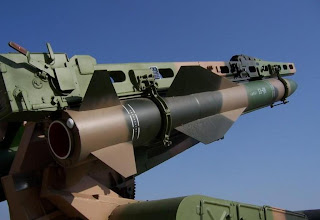bro there is an SD10 missile version on wikipedia used as sam on battle ships of china chances we can built one of our own
Surface launched version
Like the AIM-120 AMRAAM, PL-12 is also used as SAM, and tests have already successfully completed as the possible replacement of LY-60, but such system has not entered service because China has already been developing the vertical launched version. The vertical launching system is developed by the Luoyang Optronic Technological Development Center in Henan, and the system is called CCL, short for Concentric Cylindrical Launcher, which is similar to American Mk 48 VLS in appearance, but due to the very limited information publicized, it is difficult to tell if the Chinese VLS is a "cold launch" system or a "hot launch" system like that of American Mk 48 VLS.
LS-II ADS
At the 7th Zhuhai Airshow held at the end of 2008, a mobile air defense system (ADS) based on PL-12/SD-10 were revealed to the public. The weapon system is designated as LS-II ADS, with LS stands for Lie Shou, meaning Hunter in Chinese (猎手

. The launching system does not incorporate VLS technology, but is very similar to Raytheon SL-AMRAAM (Surface Launched - Advanced Air-to-Air Missile).
The launching platform is Dongfeng (东风, East Wind) EQ2050 Iron Armor (Tiejia, 铁甲

or other Chinese High Mobility Multipurpose Wheeled Vehicle (HMMWV), and like SL-AMRAAM, both the short-range IR guided AAM and medium-range AAM are included. The Chinese LS-II ADS launching platform differs from its Raytheon counterpart in that the latter has a total of 6 missiles, while former only has four. LS-II ADS only contains two short-range IR guided AAMs (PL-9) and two medium-range AAMs (PL-12/SD-10), with PL-12/SD-10 missiles mounted in the center, and the PL-9 missiles mounted on the outside. The second pair of medium-range AAMs of Raytheon SL-AMRAAM system outside the short-range IR guided AAMs does not exist on the Chinese LS-II ADS.
In addition to the launching vehicle, LS-II ADS also include two other vehicles, which is also often based on the Dongfeng (东风, East Wind) EQ2050 Iron Armor (Tiejia, 铁甲

or other Chinese High Mobility Multipurpose Wheeled Vehicle (HMMWV), for the purpose to simplify logistics, though chassis of other vehicles are also available. One of the two other vehicle is for power source, and LS-II ADS can be fully functional without it, though on a shorter continuous operation. When engaging targets, PL-9/DK-9 would engage targets at lower altitude while PL-12/SD-10 would engage targets at higher altitude, and multiple missiles can be fired together to simultaneously engage multiple targets.
Another vehicle of LS-II ADS carries a passive-phased array radar for fire control. The new radar is based on the anti-stealth radar shown a year earlier at defense exhibition at Abu Dhabi in 2007, and appears to be a scaled-down version of the former. However, the developer dubbed the radar as Anti-low radar cross section early warning radar, though some capability against stealth target do exist. Electro-optical fire control system is mounted separately on the roof of the driver's cabin of the launching vehicle, and can function independently in the absence of the radar. LS-II ADS is integrated to the larger air defense network via LIN87 data link.













 . The launching system does not incorporate VLS technology, but is very similar to Raytheon SL-AMRAAM (Surface Launched - Advanced Air-to-Air Missile).
. The launching system does not incorporate VLS technology, but is very similar to Raytheon SL-AMRAAM (Surface Launched - Advanced Air-to-Air Missile).